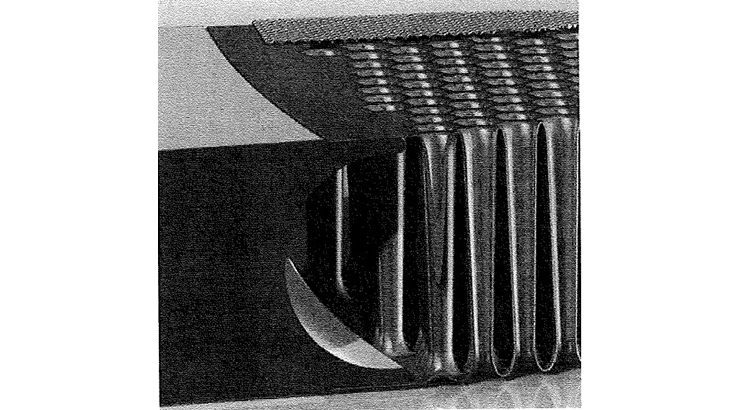Monocoque Shell-and-Tube Heat Exchanger
ID# 2015-0923
Technology Summary
The desire for good net heat transfer between the regenerator and the heat exchanger, and the desire for nearly isothermal oscillatory heat exchange, lead to a heat exchanger with features in the working fluid that are very small and scale with the thermal penetration depth. The monocoque plating-on-mandrel technique allows an economical and practical way of accomplishing this in a shell-and-tube geometry. By casting mandrels in a mold with many tiny pins that become holes in the mandrel, the relatively high one-time cost of making the mold can be spread over very many mandrels and heat exchangers, as opposed to cutting, arranging, and joining tens of thousands of very small tubes for each heat exchanger. Further, casting the mandrel in a mold with non-cylindrical pin shapes allows for tube shapes that are better suited to thermoacoustic and Sterling machines than the cylindrical tubes of existing technologies.
Application & Market Utility
Thermoacoustic (or Stirling) machines can be key technology in many types of devices, including refrigerators, electrical power generators, and waste heat recovery systems. One component of such machines is the heat exchanger, which can be power-limiting, troublesome, and expensive aspects of the system. This technology overcomes many of the shortcomings of current heat exchangers, resulting in a more efficient and cost-effective solution applicable to a wide range thermoacoustic machines.
Next Steps
This technology is patent pending. The research team seeks investment and collaboration for future development, commercialization, and licensing.

